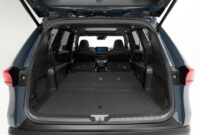How much would you be willing to pay for the smallest car in the world and with almost 60 years behind it? Well, the new lucky owner of one of the less than 30 remaining units of the Peel P50 has disbursed 111,000 pounds at an auction held in the United Kingdomwhich in exchange has been about €132,000, that is, more than the cost of a BMW M4.
However, although it may seem crazy, the truth is that it is quite a bargain, since another unit was auctioned six years ago that reached $176,000 (about €160,000). Also, our unit is a bit special as it is a pre-series model which has a lower windshield fit, is equipped with Lucas turn signals and does not have a rear roll bar, making it perhaps the oldest Peel P50 in circulation, also being the copy used in a 1963 advertising campaign at Blackpool Tower.
At 1.37 meters and almost 60 kg: the smallest car in the world
But as we said at the beginning, what really makes the Peel P50 special is the fact that it is the smallest car in the world. It arose as a project of a company based in the Isle of Man called Peel Engineering Company that wanted to build a small car as a solution for urban mobility, something like the electric scooter of our time. In fact, it was announced that It had capacity for one person and a shopping bag in its 1.37 meters in length and almost 60 kg in weight.
As such, it must have been a cheap and lightweight product, hence the austerity that surrounds it and is reflected in a seat that looks like a beach chair, the use of a single headlight or the no turning back – nor does it need it since its small turning radius allows it to turn practically on its own axis – which forces the driver to go outside, lift the Peel P50 from a handle located on the back and turn it, although it does have a gearbox with three forward speeds.
As for the technical section, equip a 49cc engine of displacement manufactured by DKW that develops 4.5 CV transmitted directly to the rear wheel, enough to exceed 60 km/h top speed and achieve a consumption of just over 2 l/100 km.
It is estimated that between 1962 and 1966 some 47 units were manufactured which were sold for around 300 pounds (€357), which, taking inflation into account, would be the current equivalent of approximately €6,500, with no more than 26 units still in existence today.






